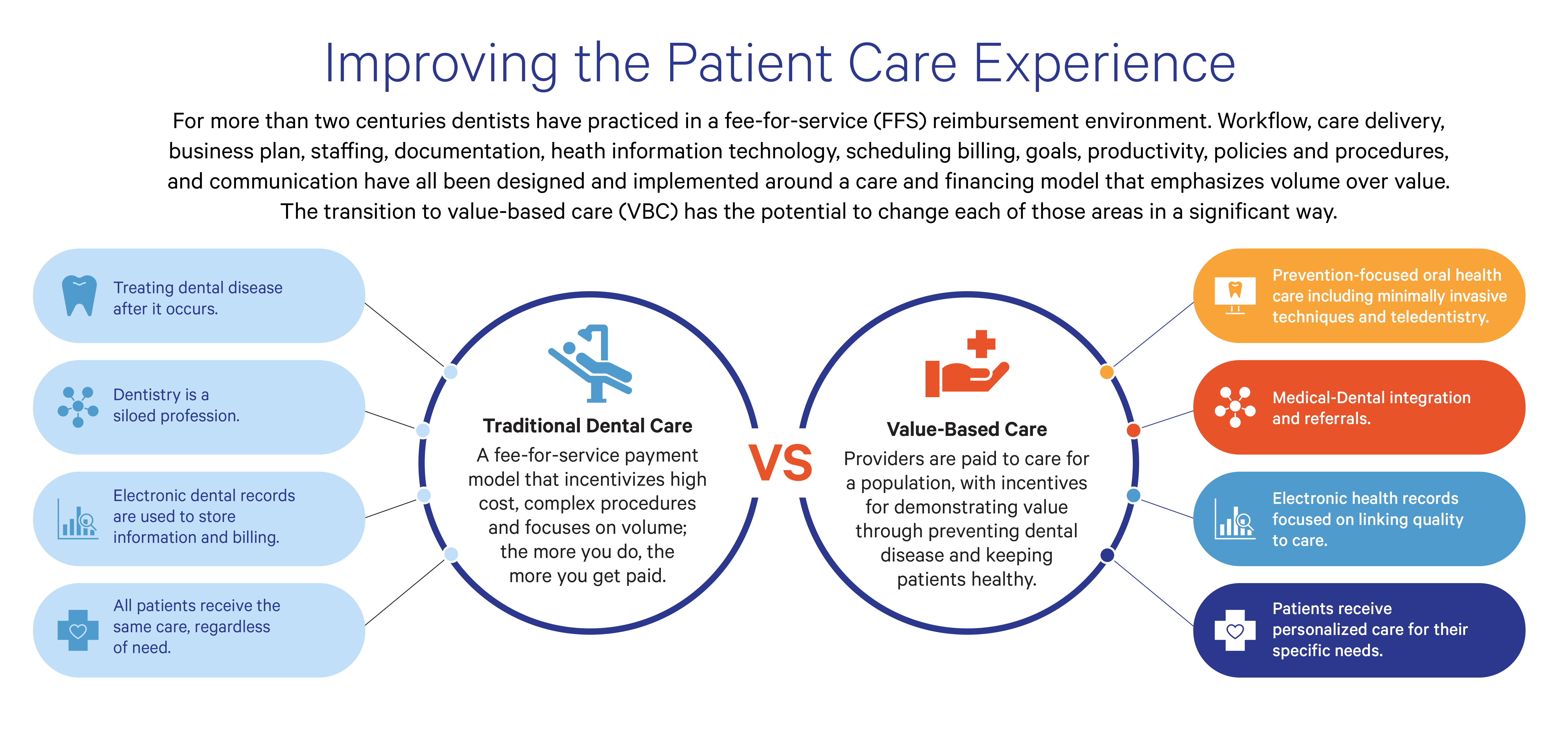Enter your email to receive the CareQuest newsletter:
Value-Based Care
For more than two centuries, dentists have practiced in a fee-for-service reimbursement environment. That is, the system incentivizes performing more — and more complex — procedures, not preventing disease and lowering costs. But the transition to value-based care has the potential to change all of that.

The Shift to Value-Based Care
In recent years, in both medicine and dentistry, there has been a push to transition to a model that rewards the quality of outcomes, not the quantity of services — a model known as value-based health care. This approach incentivizes prevention and personalization in care. And the shift to value-based care is showing promise.
The advantages of a value-based care model vs. a fee-for-service model are clear: less waste, lower costs, and, most importantly, better oral health for patients. Getting to that reality, however, will take innovation, persistence, and a redesigned oral health care system.
Is your organization ready for value-based care and payment?
The Benefits of a Value-Based Care Model
What are the benefits of value-based care? Value-based care is designed to align the system of care, the person, the provider, and the community to achieve better health outcomes at lower costs. Successful designs in dentistry are prevention-focused, minimally invasive, and risk-based to ensure an equitable distribution of resources. They also involve integration of data, care across the continuum, and a range of person-centered models, such as teledentistry.
A successful value-based care model prevents dental disease and keeps patients healthy. The resulting payment model is also beneficial because providers and payors can ensure a steady revenue stream for the patient base even if there are fluctuations in care pathways driven by risk status or by disruptions to practice operations.

Signs of Progress
According to a CareQuest Institute research report, both Medicaid and Medicare are increasingly using alternative payment models (APMs), and private insurers are beginning to use them as well. APMs increased from 27% of all dental claims in 2013 to 33% in 2017. In addition, Federally Qualified Health Centers (FQHCs), which serve many people who are uninsured and living in poverty, have been at the forefront of shifting away from fragmented dental care provision and toward an integrated model that includes a shift to value-based care.
Nearly 70% of Medicaid beneficiaries are enrolled in managed care plans today. And ongoing work in states like Michigan and New Hampshire is paving the way to show what’s possible within a value-based payment model.

51%
44%
70%
The Path Ahead for Value-Based Care
Shifting to value-based care and APMs in dentistry involves a significant transformation in care delivery and financial management. As noted above, in 2020, a survey revealed that more than half (51%) of responding providers had never heard of APMs in dentistry. Clearly, education and outreach will play a critical role in adoption. In addition, we need further testing and piloting of value-based care models in dentistry. To shift to value-based care, dental practices will need certain elements, such as appropriate technology infrastructure, reporting and analytics, and methods to predict utilization and costs.
Is your organization ready for value-based care and payment?
